Reviews
Poul Bang & Sidney W. Pink
USA / Denmark, 1961
Credits
Review by Adam Balz
Posted on 22 October 2010
Source Orion VHS
Categories 31 Days of Horror VII
When I was younger, my brother and I would spend our summer mornings with our grandmother while both of our parents worked. Generally, we followed the same routine from day to day, modeled not only around her schedule but the interests of her two pampered grandchildren: The Price is Right, followed by lunch, syndicated reruns of Murder, She Wrote and The Equalizer, a board game on the kitchen floor, and maybe a game in the back yard. It was never anything other than fun, and our mornings were never more remarkable than when we could watch the occasional movie on television—always a horror film and almost always bad. That is how we were introduced to Reptilicus, certainlyly one of the most infamously awful films ever made.
The plot of Reptilicus is a difficult one to construct, though not because it is profound or complex—the storyline is pretty straightforward: minors unearth a slab of bloody, unidentifiable flesh during a routine drill. Taken to a laboratory, it’s allowed to regenerate into the titular acid-spewing monster, which soon terrorizes the population of Denmark. One of the film’s protagonists, General Grayson, attempts to stop the creature in its tracks but to no avail. Should the monster be attacked, he’s told, every piece of its remains would regenerate into a whole new monster, creating perhaps thousands of Reptilicuses.
The true difficulty of Reptilicus comes in its history. Marketed as Denmark’s first horror film, Reptilicus was purchased by an American studio and redone for American distribution. And while this might seem like standard practice today, the man charged with repackaging Reptilicus was not, it seems today, up to the task. Sidney W. Pink made two additional versions of the film, though he did so with some changes to the cast—a group of good-looking, dubbed-over Danes that includes a character deserving of some note: an out-of-place, almost hilariously stereotypical “American yokel” character named Petersen. Obviously meant to serve as the film’s comic relief, Petersen spends much of the film bumbling around the laboratory in flannel - he is, after all, the janitor - before accidentally unleashing Reptilicus onto Denmark. In the process, Petersen becomes Reptilicus’ first victim, which should have removed any remaining comic relief from the film and allowed the tension to build.
Unfortunately, Reptilicus seems to have been doomed from the get-go. With quality befitting the skills of an at-home amateur, the film is known today almost solely for its ridiculous special effects, the most infamous of which is the creature itself: a marionette lizard that evokes sock puppets. Throughout the second half of the film, we’re offered footage of the creature smashing itself into poorly constructed models of apartment and office buildings, almost as though it were drunk instead of on a rampage. The fear so many pedestrians exhibit towards Reptilicus is entirely overblown, especially when we’re offered further footage of the monster slithering its way through town, spitting up on the military, devouring an animated farmer, and so on. It’s all laughably, unstoppably awful.
Over the last few years, I’ve become aware of a habit of mine—reviewing horror films that I treasured as a child. Most of these films are, upon a second viewing, noticeably bad, even while my memories are less so; the Nightmare on Elm Street films, for instance, have aged over the last ten years as well as milk would have, while all those Stephen King adaptations I worshiped - Cujo, Christine, and Pet Sematary among them - are now just plain dull. (It has managed to remain fairly terrifying, primarily because clowns, especially those portrayed by Tim Curry, are just one of those horror motifs that remain fresh and jolting throughout life, for whatever reason.) The innocence of childhood allows us to be more easily scared. Today, when I watch entries in the Saw franchise and films by Eli Roth, I’m bored, not because they aren’t inventive or scary, but because there are so many more genuine, real-life things to be scared of, especially in - or perhaps even because of - the 24-hour news cycle.
As a child, no matter what the film, we exist with the TV or movie screen, just us and it—there is no world outside the living room or the cinema. Today, even the slightest, most innocent bit of dialogue in a horror film - about fear, about disease, about death - can trigger immediate flashbacks to some key word in that day’s news, and suddenly nobody is impressed by plastic knives and corn-starch blood. That’s not to say horror films must reinvent themselves to be more or less modern, more or less relevant—I have no interest in being one voice among the millions of others crying for reinvention. All I’m saying is that scaring children is easy—even the Danes’ sock-puppet lizard could manage a shrill cringe or two years ago. But adults, now those are some difficult customers.
More 31 Days of Horror VII
-

The Thin Blue Line
1988 -

The Ninth Configuration
1980 -
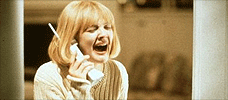
Scream
1996 -
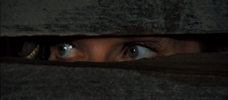
Dying Room Only
1973 -
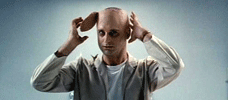
Brain Dead
1990 -
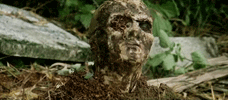
Zombi 2
1979 -
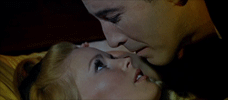
Dracula Has Risen from the Grave
1968 -

The Storyteller
1988-1989 -
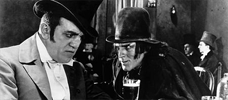
Dr. Jekyll and Mr. Hyde
1920 -
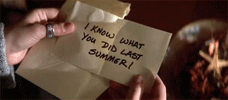
I Know What You Did Last Summer
1997 -
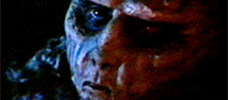
Don’t Be Afraid of the Dark
1973 -
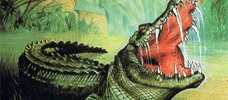
Dark Age
1987 -
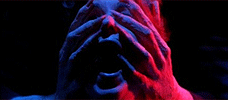
Inferno
1980 -
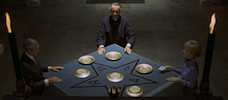
To the Devil a Daughter
UK / West Germany -
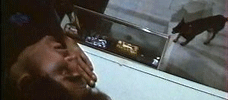
Trapped
1973 -
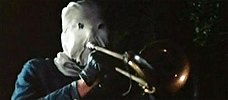
The Town that Dreaded Sundown
1976 -

Halloween H20: Twenty Years Later
1998 -

Killdozer
1973 -
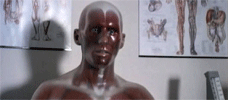
Pin
1989 -
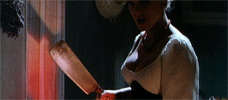
Frankenstein Created Woman
1967 -
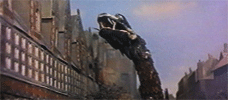
Reptilicus
1961 -
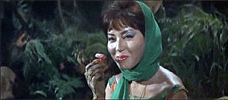
Matango
1963 -

I Still Know What You Did Last Summer
1998 -
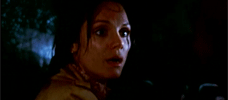
Night Terror
1977 -
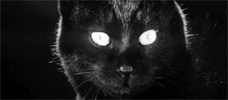
Kuroneko
1968 -

Demons
1985 -
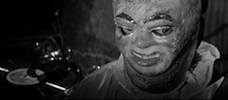
Paranoiac
1963 -

Let Me In
2010 -

The Phantom of the Opera
1925
We don’t do comments anymore, but you may contact us here or find us on Twitter or Facebook.



